Kasia Kmita is an artist who works with wycinanki (cut-outs), a popular Polish folk craft featuring colourful designs made out of layering intricate pieces of paper. Traditionally depicting rural life, wycinanki (cut-outs) in Kmita’s works are given a major switch-up. Now focusing on the urban everyday and interpersonal relations, they document and reflect on the institutional and political changes happening in Poland since 1989.
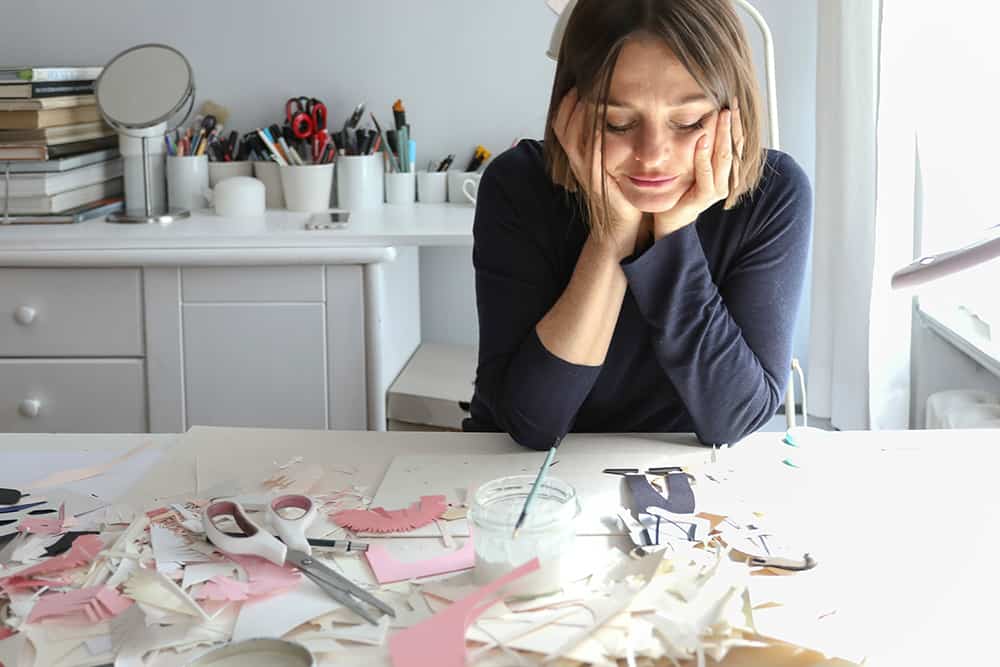
Kasia Kmita, photo by Paweł Kamiński
Maria Markiewicz: I would like to start our conversation with “Foyer”, an exhibition that you’ve just opened in Warsaw. Can you tell me a bit more about it?
Kasia Kmita: Last year, during the New Horizons Film Festival, I did an exhibition in Wroclaw, titled “A Horizontal Panorama: Kodras”. The exhibition showed the Festival as a place that is a meeting point for various groups of people. I found the Festival really interesting and inspiring and thought of it as of a unique place both on the cultural map of Wroclaw and Poland in general. The exhibition turned out to be very successful and that is why Roman Gutek, the founder and director of IFF New Horizons, asked me to show it in Warsaw, in Muranow Cinema.
In Warsaw, I’m showing only a part of the previous exhibition – that is why I treat “Foyer” as a completely new project. Of course, there are bits where these two projects intertwine, but as it often happens in the work of an artist, everything is connected and one work results from the other.
MM: The setting in which you’re showing this exhibition is not accidental. Film threads appear not only in the subject of your works, but also in the way that they are made. Cutting, editing, framing and close-ups are all present in the work of a film director and in your work, as an artist.
KK: The exhibition that I’m showing in Warsaw is structured almost like a film plot. It tells the story of different, intersecting worlds, which are shown and introduced to us by the exhibition’s main character, a girl named ‘She’. It all starts during a prom, where ‘She’ is with her friends. From there, we are taken to various different environments and places, such as the pride parade in Warsaw, the foyer of the Muranow Cinema and the beach in Leba.
‘She’ is a bit like me, because she also likes being in different worlds. From a golf course, a shop, a ball to being amongst artists at a vernissage – this is what this exhibition is about. It is about jumping from one world to another without judging them. Because it is the act of watching itself that brings me the greatest pleasure, I leave the judgment to others.
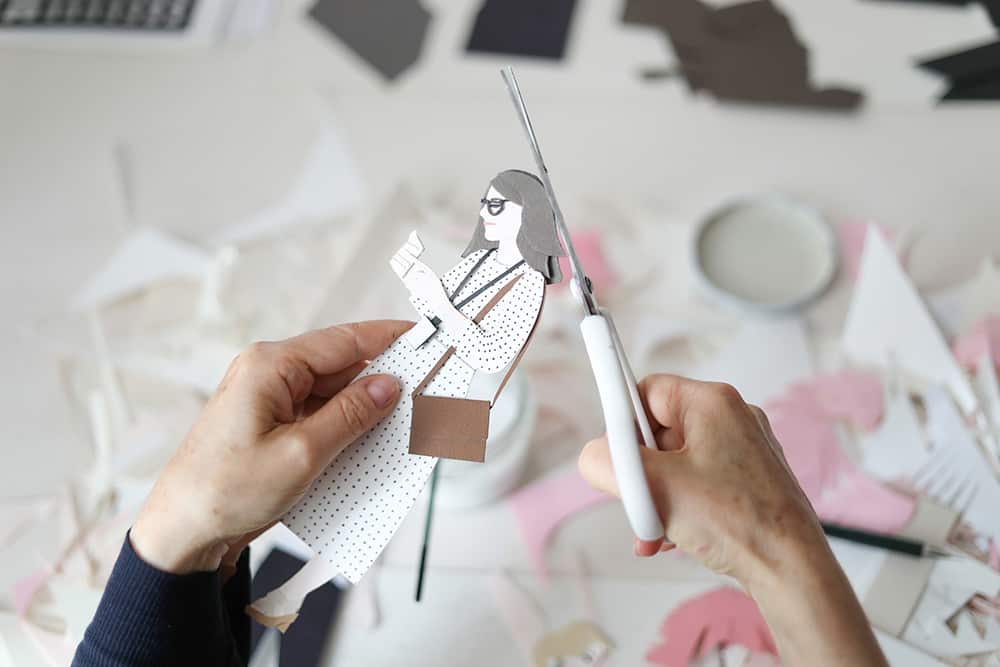
Kasia Kmita, photo by Paweł Kamiński
MM: The works shown during both of these exhibitions were made using a cut-out technique inspired by folk kodras. Where does your interest in folk art come from?
KK: For me, folk art and cut-outs are a way to show the changes that I have observed throughout my life. I thought it would be a great and very quick way to show how Poland changed drastically after 1989. This is how I made my first cut-outs; it was in 2004. Instead of folk cocks, I used things that started to appear in Poland after the transformation and the change of the political system. My interest in them resulted from my childhood dreams, because I grew up in communist Poland, which was completely different from today’s Poland. I couldn’t pass by these changes indifferently. These were huge changes, also visual, which I wanted to highlight as an artist. This is how the first series of cut-outs was created, into which I wove various symbols taken from popular culture, such as Snow White and the American flag.
MM: How do you feel about all these changes? You seem to be very optimistic about them!
KK: That’s simply who I am, I love people and the world around me. I am really happy about the changes that happened in Poland, because I used to not like the communist reality, especially its visual aspect. I feel like the visual sphere is the sphere that we won’t argue about in Poland. Everything else is highly politicised and divides us easily. This is what I love about this transformation and what I cherish in life, deep human connection and understanding.
I remember that growing up, we used to collect stickers, cans and share addresses to companies such as Coca Cola between each other. We then used these addresses to send letters to the companies and after a while, we would receive some stickers from them. Once, we sent a letter to a priest from the United States and he sent us a videotape with some church recordings. We would delete the videos and keep the tape! We grew up in such a world. So much has changed since then that it is impossible not to notice.
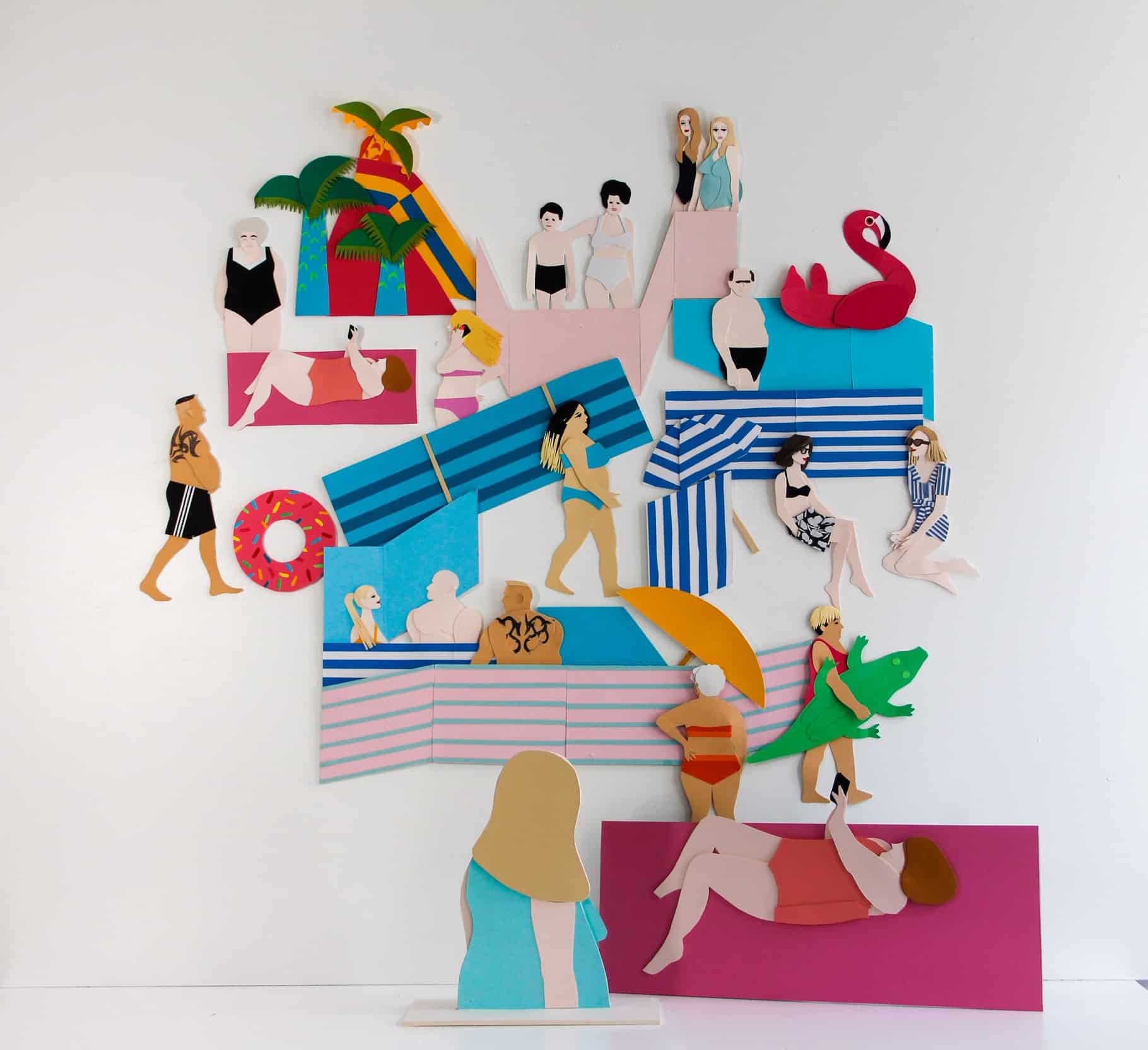
Kasia Kmita, The Beach, 100x100x25cm, 2020
MM: Growing up, was folk art something that you were surrounded with?
KK: Yes, and I always liked it! In communist times, folk shops (Cepelias) were the coolest and the most colourful places in Poland. There was always something going on there, and it made a huge impression on me when I was a kid.
Music and culture were always present in my family home. I grew up without being intimidated or embarrassed by our folk traditions and culture. It was a very positive and creative upbringing, so folk elements were nothing new to me.
MM: I would like to ask you a bit more about kodras now, the technique you are using in your cut-outs. Where did it come from?
KK: Kodras were cut-outs hung on ceiling joists. They depicted scenes from everyday life. The name itself comes from the quilts, the predecessors of wallpapers, hung in noble houses, which were woodcuts stuck to the walls.
I always wondered what these forms represented. It was mainly rural life, farming and religious celebrations. Although the lives of kodras’ creators were overloaded with work, they were also a bit mundane, which takes us to the present day – a world full of stimuli.
In my works, I depart not only from the original subject of kodras, but also from their initial form. It is important for me to develop and modernise this technique, which is why my works are getting bigger and more spatial with time.
In the past, our lives were dependent on the seasons, such as summer and winter. Now they are not. It has all been shaken a bit, and if anything rules us, it’s a human rhythm. This rhythm consists of mutually determined holidays, celebrations and festivals that allow us to get together at a specific time of the year. This is also how my fascination with kodras began – from noticing nature disappearing from our lives, in favour of interpersonal relations.
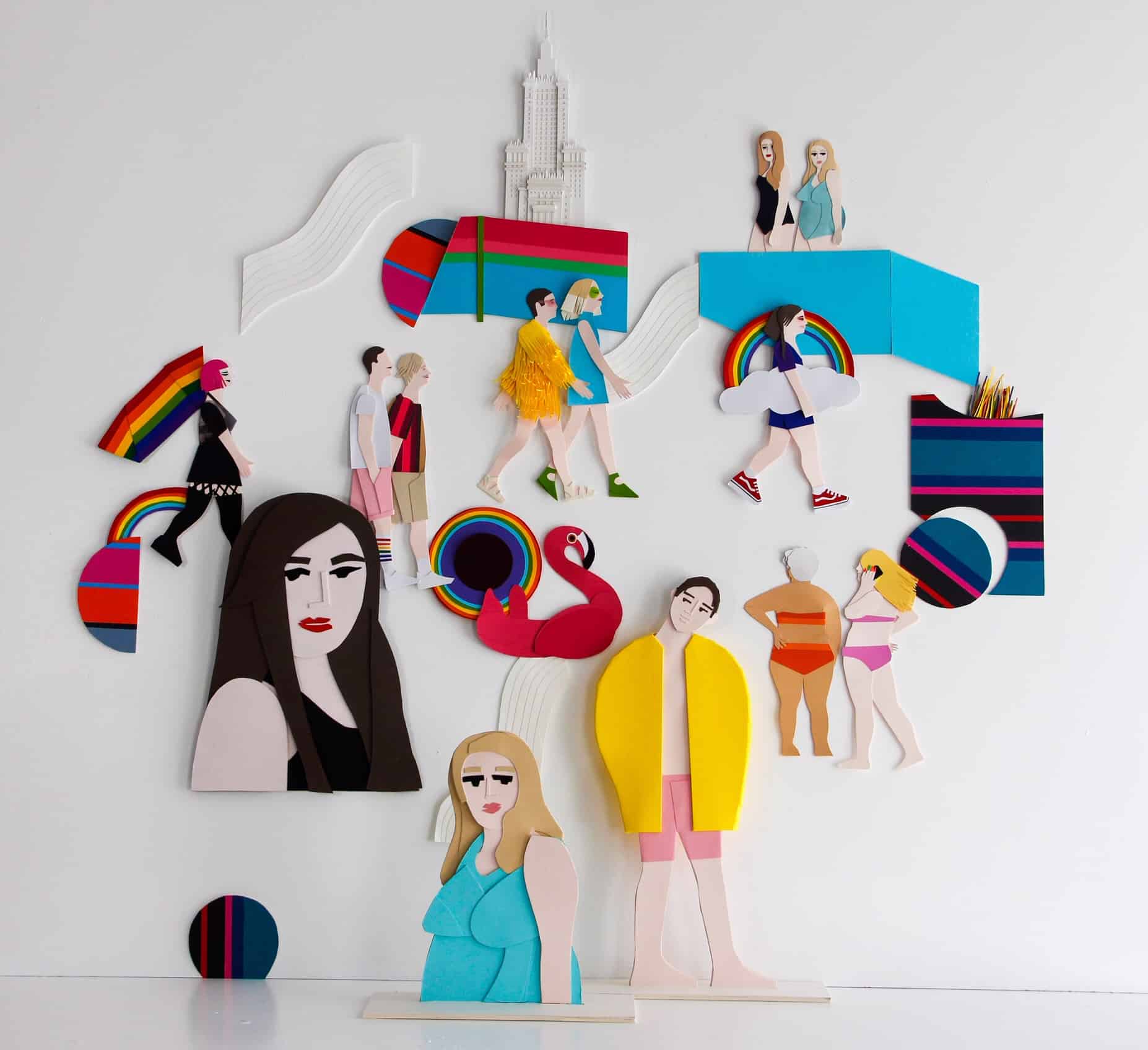
Kasia Kmita, Parade, 100x110x20dcm, 2020
MM: You were trained as a painter. How did that influence you and what you create now?
KK: Colour is still very important to me. Although I create in a slightly different way now – cut out of paper – for me, it is very similar to painting with a brush on canvas. Especially since most of the paper I work on is prepared by painting it with acrylic paint earlier. I mix the colours myself and use them to create foundations from which I cut out. I do this for two reasons – one of them is painterly and the other one has to do with the durability that acrylic gives to these works. I believe that if the colour rules something, it is painterly.
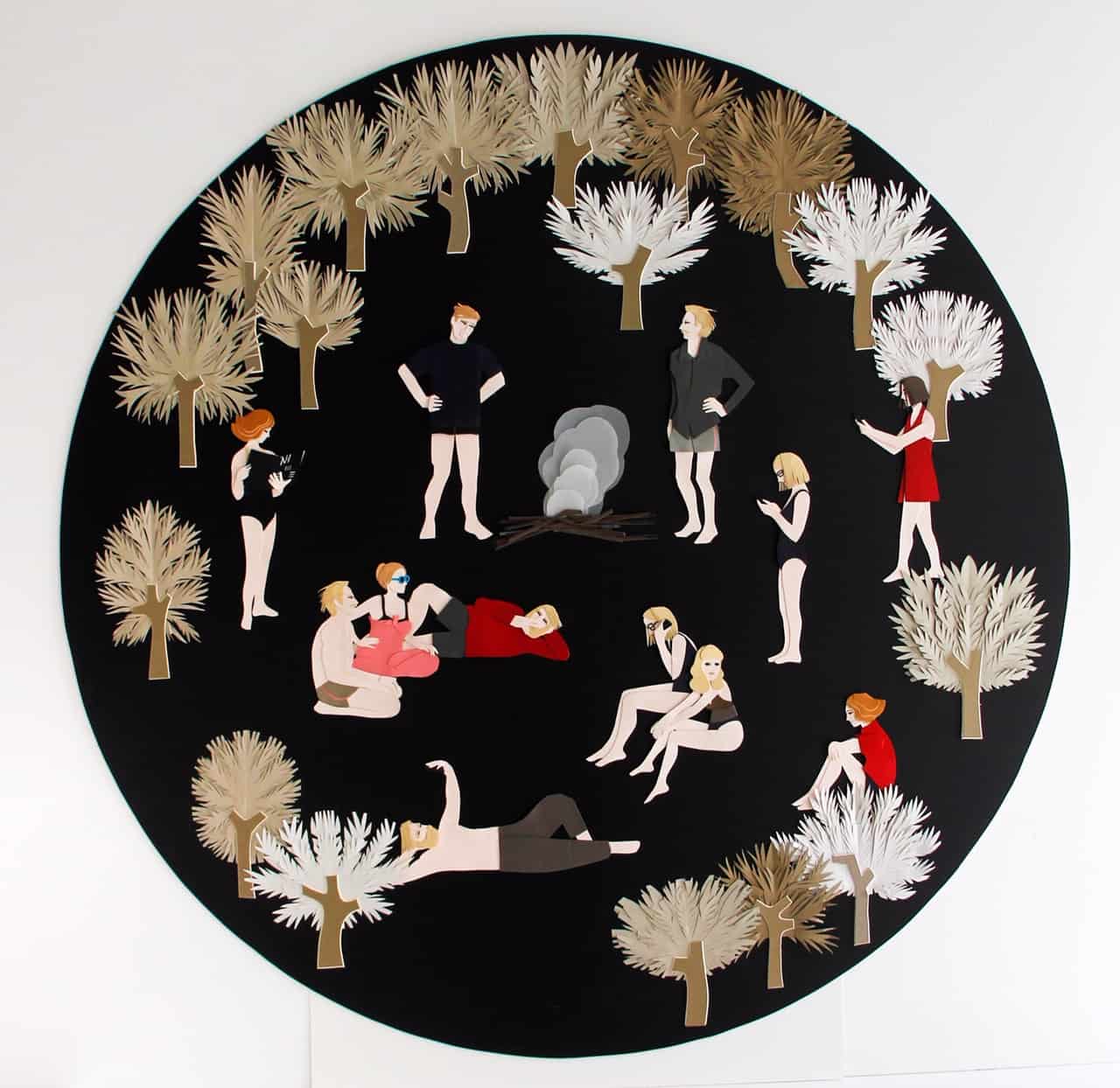
Kasia Kmita, Campfire, 110x110cm, 2020
The solo exhibition titled “Foyer” by Kasia Kmita is on view between 30 September and 22 November at the Kino Muranów (ul. Gen. Andersa 5, 00-147 Warsaw).
Curated by Stach Szabłowski and organised by Krupa Gallery.
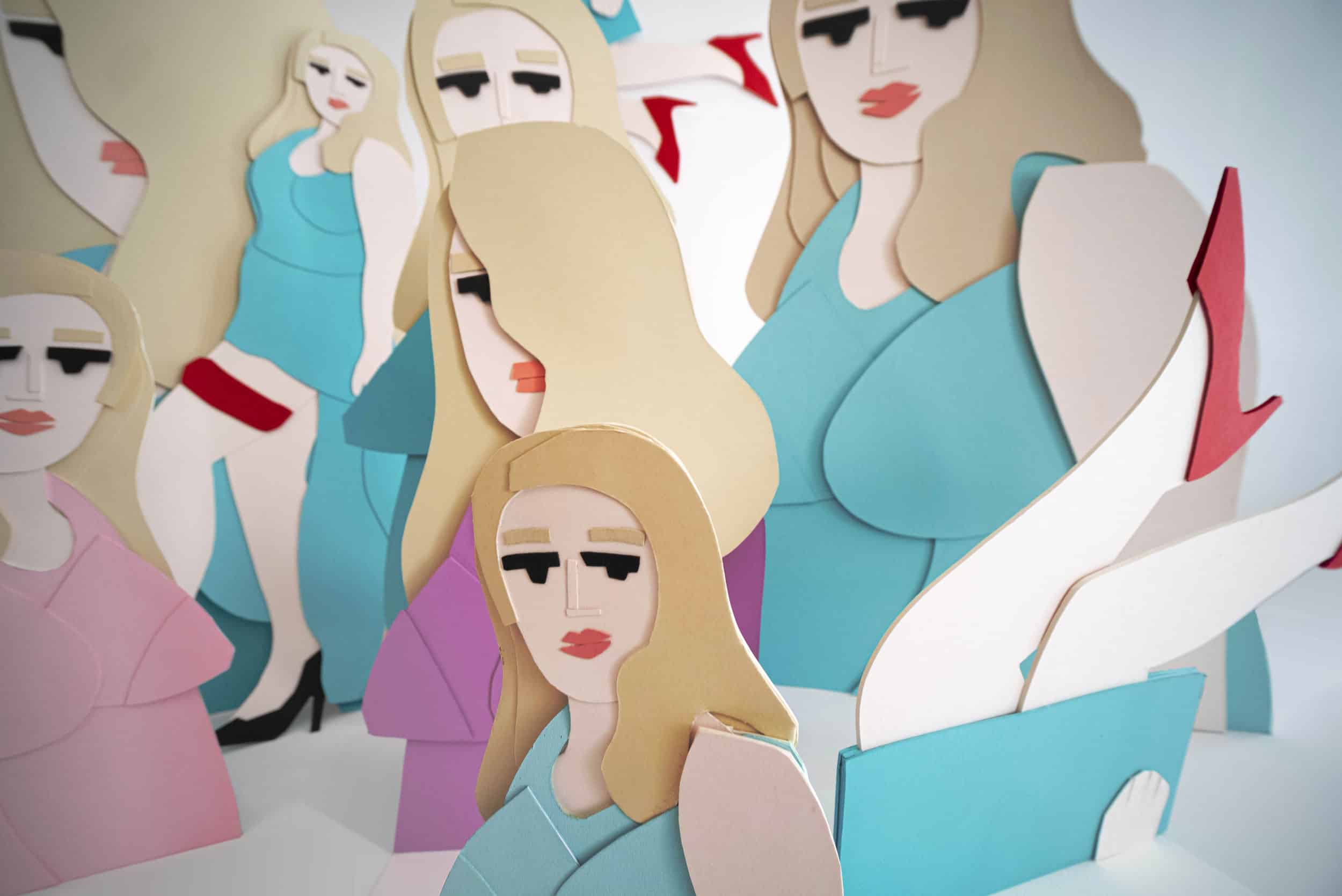
Kasia Kmita, She, 2020






